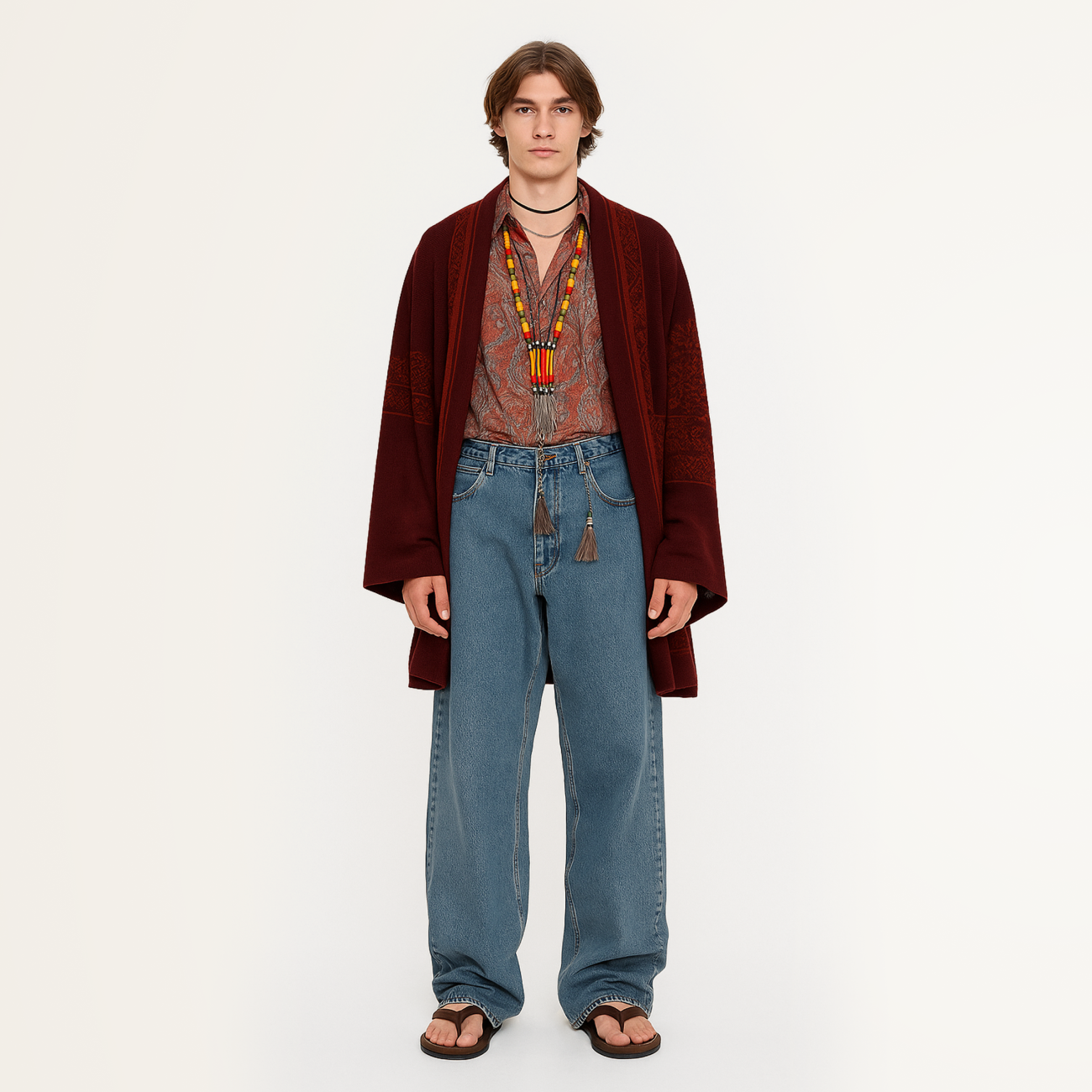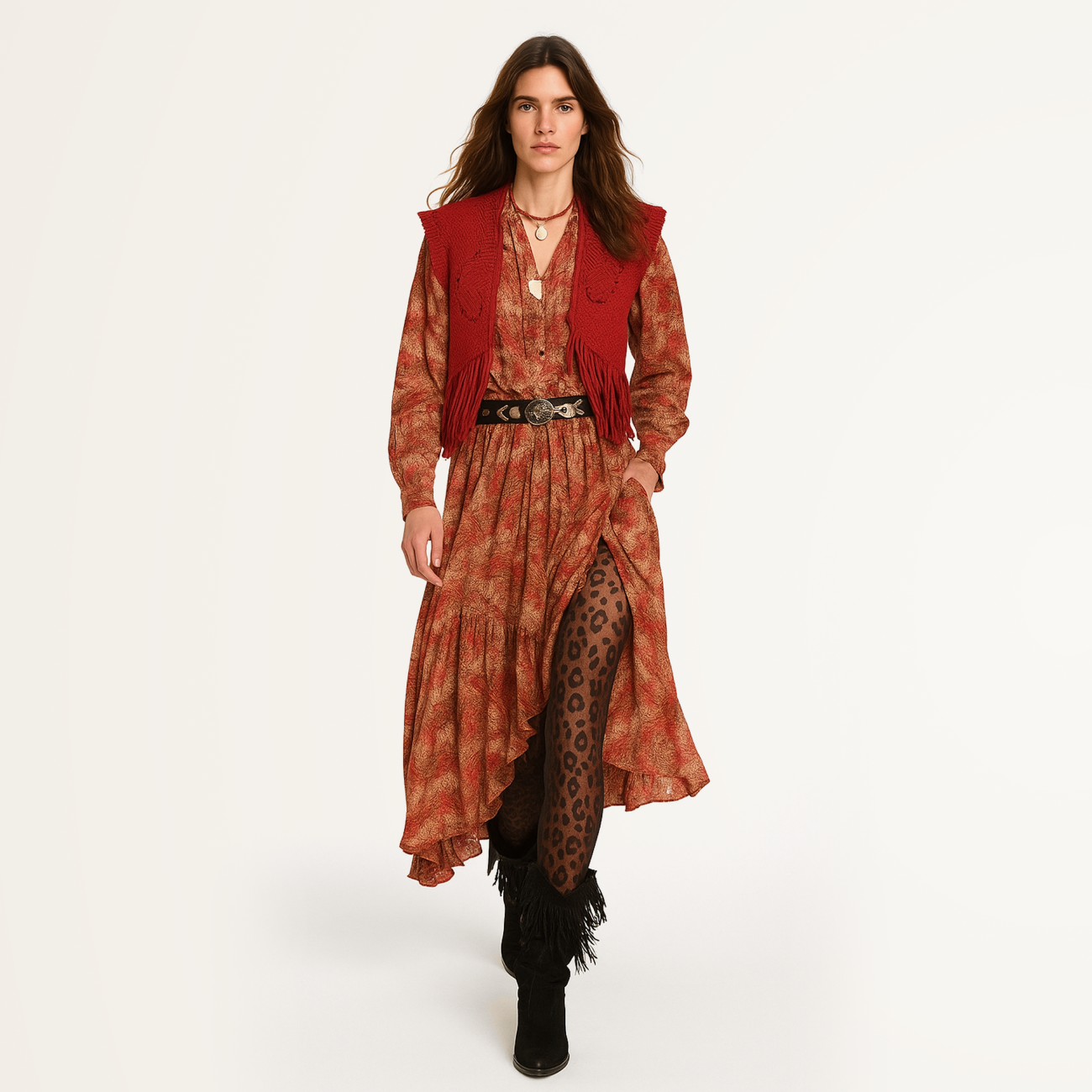Hippy
Hippie style is more than just an appearance; it’s a way of expressing one’s ideals through clothing. Its roots go back to the 1960s, when young people sought freedom, harmony with nature, a rejection of consumer culture, and protest against social constraints. The philosophy of hippie style embodies the values of love, peace, freedom, and self-expression. These principles remain timeless and continue to resonate with those who seek spirituality, sustainability, and a sense of identity that isn’t defined by the mainstream.
History
The hippie style was born in the United States in the 1960s amid protests against the Vietnam War, the civil rights movement, and a growing desire among youth for spiritual freedom. Inspired by the philosophy of peace, love, and harmony with nature, hippies rejected the norms of consumer society in favor of a simple and liberated lifestyle.
The movement reached its peak at the Woodstock Festival in 1969, where hippie style flourished in all its glory: flowing dresses, floral prints, ethnic accessories, colorful headbands, and peace symbols became its visual hallmarks.
Eastern philosophy had a significant influence on the aesthetic: hippies admired Indian and Eastern cultures, which was reflected in clothing (such as saris, tunics, and ethnic jewelry) and a strong inclination toward spiritual exploration. Psychedelic art added vibrant colors, tie-dye patterns, and symbolic motifs to the style.
In the 1970s, the hippie style absorbed elements of boho and glamour, and in the 1990s, it experienced a revival as the “neo-hippie” style in more modern interpretations.
Signature elements of the style
Color palette
Colors inspired by nature, such as earthy browns, olive, ochre, and terracotta, along with vibrant and saturated shades of purple, blue, and green, symbolize a connection with the environment and the expression of inner feelings.
Prints
Floral patterns, paisley, ethnic motifs, tie-dye, and stripes are characteristic prints that add style and richness to the look. Psychedelic prints reflect an interest in mysticism, freedom, and individuality.
Textures
The boho style is rich in textures and materials that evoke a sense of naturalness and comfort. Natural fabrics such as linen, cotton, wool, suede, and leather are used. Fabrics are often combined with decorative embroidery, fringe, knitted elements, lace, and beads.
Cuts & silhouette
Loose, unrestrictive silhouettes, asymmetry, layering, and the use of draping. The style embraces ponchos, voluminous skirts, long dresses, and wide-leg trousers — prioritizing comfort, freedom of movement, and the absence of rigid structure.
Wardrobe essentials
- Ponchos and kimonos with ethnic patterns or fringe.
- Long maxi skirts and dresses with floral prints.
- Flared jeans and palazzo-style pants.
- Tops and blouses with embroidery or lace, often featuring flared sleeves or deep necklines.
- Suede vests with fringe and beaded embellishments.
- Wide-brimmed hats or turbans.
- Beaded necklaces, feathers, and stone jewelry, along with various accessories featuring peace symbols or dreamcatchers.
Substyles
- Boho-Hippie: A blend of bohemian and hippie styles, combining ethnic influences, eclectic layering, handcrafted elements, and vintage flair. This style embraces relaxed silhouettes and a mix of textures and eras.
- Ethno-Hippie: Focuses on ethnic elements, prints, and accessories. Garments may feature traditional patterns and references to indigenous cultures, such as fur, feathers, Native American motifs, and Eastern-inspired jewelry.
- Neo-Hippie: A modern interpretation of the hippie aesthetic, incorporating minimalism and sustainable, comfortable materials. Emphasis is placed on eco-consciousness and mindful consumption, with subtler but recognizable hippie-inspired accents.
Email: support@belt-app.com


















